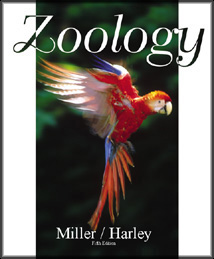CONTENT AND ORGANIZATION We have retained the evolutionary and ecological focus of Zoology, believing that these perspectives captivate students and are fundamental to understanding the unifying principles of zoology and the remarkable diversity within the animal kingdom. We have enhanced the ecological perspective by expanding the use of Wildlife Alerts, which we included in a limited fashion in the fourth edition. One of these Wildlife Alerts is incorporated into the first 22 chapters of the book. They feature some issue related to endangered and threatened species of animals. In most cases, they depict the plight of a selected animal species. In other cases, they depict broader ecosystem issues or questions related to preserving genetic diversity within species. In all cases, the purpose of these Wildlife Alerts is to increase student awareness of the need to preserve animal habitats and species. Zoology is organized into three parts. Part One covers the common life processes, including cell and tissue structure and function, the genetic basis of evolution, and the evolutionary and ecological principles that unify all life. Part Two is the survey of animals, emphasizing evolutionary and ecological relationships, aspects of animal organization that unite major animal phyla, and animal adaptations. All of the chapters in Part Two have been carefully updated, including new examples and photographs. The coverage of animal classification and organization in chapter 7 has been expanded from previous editions to include more background on cladistics and enhanced coverage of protostome/deuterostome relationships. As in previous editions, the remaining survey chapters (8-22) include cladograms to depict evolutionary relationships, full-color artwork and photographs, and lists of phylum characteristics. Part Three covers animal form and function using a comparative approach. This approach includes descriptions and full-color artwork that depict the evolutionary changes in the structure and function of selected organ systems. Part Three includes an appropriate balance between invertebrate and vertebrate descriptions. | 


 2002 McGraw-Hill Higher Education
2002 McGraw-Hill Higher Education

 2002 McGraw-Hill Higher Education
2002 McGraw-Hill Higher Education